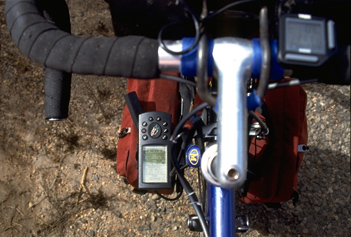COMPUTER
| Model: | Psion Series 3c
|
| Power: | 2 AA batteries. 2 Sets will last the whole trip.
|
| Capacity: | 2 meg RAM + 1 meg FLASH memory.
|
| Software: | Additional to the built-in software are programs for email,
data exchange with GPS and software that links the two and generates the mail enabled transactions that result in this site being automatically updated.
|
|
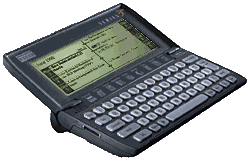
|
MODEM
| Modem | Psion Travel Modem
|
| Power | 2 AA batteries.
|
| Speed: | 14,400bps nominal, but a ceiling of 2400
baud is imposed to make communications more reliable through the acoustic coupler and public telephones.
|
|
| Accoustic coupler | Teleadapt telefast
|
| Power: | 9V battery
|
| Consumption: | 1 battery for whole trip.
|
| NOTE: | Modem and accoustic coupler are joined with velcro
to make a single compact unit easy to handle at payphones.
|
|
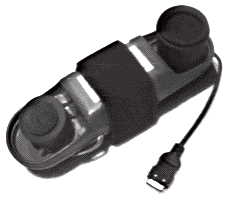
|
NAVIGATION
| GPS | Garmin GPS II+
|
| Software: | Version 2.07
|
| Power: | 10 volt main bus or 4AA batteries when offline.
|
| Consumption: | 0.75 watts max.
|
| Note: | Batteries used during data downloads and
walking, or if main bus' batteries are depleted and there is no sun. (at night for instance). The unit can last about 24 hours on
one set of 4 AA batteries. During the trip, I can expect to change these batteries once. (Mostly due to data downloads at night in tent)
|
| Added function: | The unit has a diagnostic mode which, when enabled, provides
accurate voltages for both inboard batteries as well as main bus power. Usefull to gauge the charge of the main bus's
batteries.
|
|
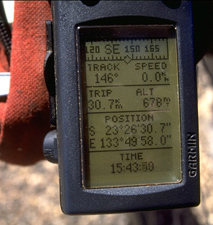
Crossing the tropic of Capricorn on the Stuart Highway
just north of Alice Springs
|
SOLAR PANEL
| Manufacturer: | Solarex
|
| Model: | MSX-5 Lite
|
| Output: | 4.7 watts max. 10-20 volts.
|
| Size: | 27cm * 27cm
|
| Mounting: | Rear rack, with velcro straps
|
| Connection: | Direct to Main Bus. (Supplies to GPS and batteries)
|
|
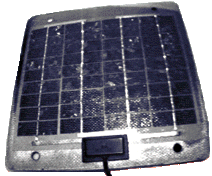
|
POWER MANAGER & WALKMAN
| Walkman: | Aiwa JX849 Recording.
|
| Amplifier: | Sony, extracted from portable speakers.
|
| Consumption: | 0.63 watts max from power converter
0.52 watts direct from batteries.
|
|
| Power centre: | Homemade
|
| DC-to-DC: | Based on NEC LM2394N chip.
Produces steady 3 volts from variable power sources. Supposed to be about 80% efficient.
|
| Batteries: | 8 Nickel Metal Hydrate (NiMh) 1.2V AA sized batteries mounted in series. Total 9.6 volts.
| | Control panel: | Various switches which allow me to select power source to walkman and amplifier (power convertor or direct from batteries) and to isolate external power bus from batteries.
|
The switches allow me to isolate various portions of the power bus to detect
faults, but most especially, allow me to monitor the solar panel's production
by isolating the batteries completely and monitoring if solar panel is
providing at least enough power to run the GPS and walkman, GPS only, or none
at all. This is crucial to prevent batteries from being depleted on cloudy days
or days when the solar panel may be in shade for long periods.
|
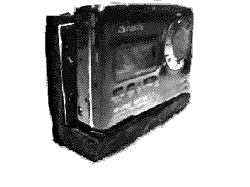
All connections between walkman and power centre are made with ribbon cable
which is soldered directly to internal circuit board. Road vibration makes Sony
mini plugs unreliable. Main bus cables are connected with phono jacks which are
quite resilient to vibration and weather.
|
LOGISTICAL SUPPORT
Logistical support is provided by a server running in a lights out condition
for the duration of the trip. Because the software runs on VMS, I need not
worry about failures. (And if they occur, in most cases, they can be remotely
fixed). The server has mail-enabled applications which provide me with waypoint
data if I do not have the area already on my PSION PDA, and processes the data
for this web site, generates the HTML and then copies it to the actual web site
hosted externally.
I may not be superman, but I have been able to remotely reboot my machine once
from an outdoors payphone in Townsville Australia, just before boarding a ship
for a week long scuba diving trip.
This setup also allows me to continue to provide operational support to some
of my customers.
|





